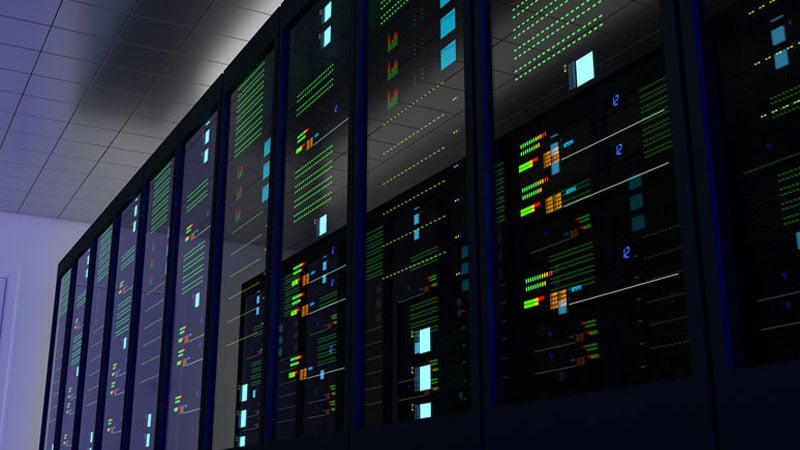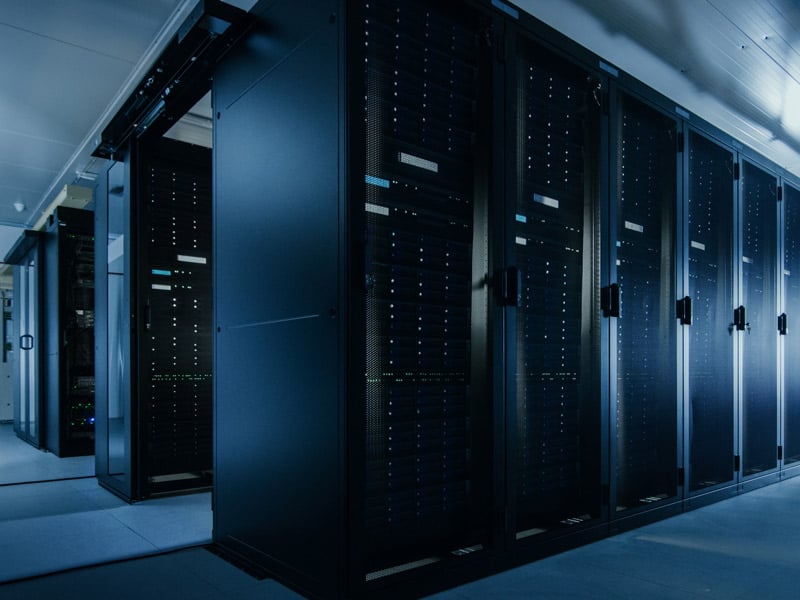Learn the basics of high-performance computing (HPC), its essential components, and its benefits, highlighting its significance in advancing AI, machine learning, big data analytics, and scientific research.
An HPC data center can process high volumes of calculations using multiple servers and “supercomputers” faster than any individual, off-the-shelf commodity computer. Specifically, HPC refers to the use of aggregated computing resources and simultaneous processing techniques to run advanced programs and solve complex computational problems, expanding performance better than a single computer or server. This can be done onsite, in the cloud, or as a hybrid. HPC systems are designed to perform at the highest operational rate for applications that require immense computational power.
Here are a few basic terms to understand the concepts related to HPC:
Parallelism
Earlier computers running on single processors could only run a command or task comprising a series of calculations—one at a time until it was completed, and then move to the next task. The concept of parallelism occurs when different parts of the same or interconnected tasks can be done simultaneously using multiple processors. With supercomputers, multiple systems working on the same or similar tasks can process commands with less power per watt and faster processing speeds and data transfer rates.


Parallel processing involves different computing systems working towards one task, while single processing is like computing with just a single unit potentially working on several tasks in sequence.
Node
Each computer in a cluster is called a node. Each node is responsible for a different task and can work in parallel with other nodes in other clusters to increase processing speed using algorithms and software simultaneously.
- Controller nodes: Run essential services and coordinate work between different nodes.
- Interactive nodes: Hosts that users log into.
- Worker nodes: Execute computations.
HPC clusters generally fall under two general design types:
Distributed computing
Using multiple computers in a single or hybrid network (on-premise or cloud) in tandem, including different hardware types in one or more distributed locations (e.g., mobile and web applications with several machines working in the backend).
Parallel computing
Also called cluster computing, this refers to a tightly or loosely knit collection of computers or servers working together as a single unit and connected through fast and dedicated local area networks (LANs). Connected and placed next to each other physically and in the network, processing and result capture latency between each node is minimal to none.
An HPC data center uses enormous amounts of power to energize powerful processors, high-density servers, and advanced cooling technologies. By leveraging advanced hardware and software solutions, HPC can process massive amounts of data. This involves training systems from even larger data sets over a continuous period to keep systems up to date. HPC can be used to solve complex simulations and challenges for academic research, science and technology, design, and business intelligence, among other uses.
READ MORE:
What is accelerated computing?

Data plays an increasingly central role in innovation and decision-making, so the demand for advanced computing solutions has never been higher. From artificial intelligence (AI) and machine learning (ML) to big data analytics and scientific research, organizations are handling and generating more data than ever, leading to the rise of accelerated computing.
Benefits of HPC in data centers
Modern HPC data centers can facilitate complex and compute-intensive tasks that drive their respective business goals and outputs. This can enable a wide berth for scalability and cost management in hardware, software, network, storage, and systems management. Accompanying tools and frameworks in the architecture aid in maintaining peak levels in resource utilization and performance, reliability, availability, and efficiency while minimizing downtimes. Through careful consideration and planning, companies capable and willing to integrate HPC data centers can have numerous advantages, including:
Enhanced performance
HPC systems significantly improve the performance of data centers, enabling them to process large datasets and complex computations in minutes or hours compared to weeks or months on a regular computing system. This is crucial for applications, services, and companies in AI, scientific research, and big data analytics.
Scalability
Computational workloads can be scaled up or down as needed, especially for cloud or on-premise hybrid HPC. Data centers can expand and meet growing demands without compromising performance. With cloud services, HPC can also be accessed from anywhere worldwide.
Long-term cost efficiency
With its speed and computational flexibility, companies can save on time and costs on computing resources and labor-intensive hours. Moreover, HPC facilities' advanced cooling and power technologies enable reliable and reduced energy consumption. By utilizing optimized technologies such as distributed energy resources (DERs) and liquid cooling, data centers can prioritize direct resource and management efficiency. This leads to reduced operational expenses (OpEx) and total cost of ownership (TCO), as well as faster and higher return on investment (ROI).
READ MORE:
What is high-performance computing?

As data volumes grow exponentially and computational demands become increasingly complex, one term consistently thrown around is "High-Performance Computing" or HPC. But what exactly does it entail, and how can data center operators leverage it to enhance their operations?
Applications of HPC in industries
Modern businesses and industries have been flooded with developments and evolving ecosystems that are increasingly dependent on cumulated data sets and compute-intensive procedures and tools in recent decades. To bring these different points together, HPC enables businesses and organizations to process and refine the data — sometimes in real-time — through various applications and services. Some notable industry applications include:
Banking, finance, and insurance
- Forecast business and case scenarios following different events and situations in the market, locally and internationally.
- Evaluate and monitor for hundreds of parameters and activities for detection in milliseconds, such as fraud.
Construction and engineering
- Aid designers and engineers in the planning and construction of physical facilities and optimize the infrastructure’s placements of components for efficiency.
Emergency and public services
- Improve and standardize response times and traffic dispatch for urgent emergency cases, and optimized solutions’ percentage made the equivalent of having seven weekly ambulance shifts
- Model potential outbreaks and predictive analysis of infection rates.
Manufacturing
- Design individual or combined engineering components by analyzing thousands of patterns based on set parameters, environmental factors, and potential scenarios while meeting strict requirements.
- Analysis of data for predictive maintenance of specific and siloed machine components and integrated systems, including software latency and performance
- Cut time for rendering new design models to prototype.
Healthcare, medical, and pharmaceuticals
- Identify and screen for new compounds for the development of new drugs for new or evolving diseases.
- Costs and time for drug development are cut up to 50% using AI, getting drugs faster to the market.
Government
- Analyze unstructured data to improve current and future public services.
- Use predictive analysis to study and create policy based on publicly available information such as population movements and climate information
Key Areas of Impact.
HPC: Key areas of impact
Big data analytics
Efficiency in analysis: HPC facilitates the rapid processing of vast datasets, enabling the discovery of insights through high-performance data analytics, a blend of HPC and data analytics techniques.
Handling exponential data growth: To manage the surge in data volumes, innovative HPC systems with parallel processing are essential for executing comprehensive analytic tools and integrating them with data-intensive analysis.
READ MORE:
Empowering High Performance Computing (HPC) Research Applications with Future-Enabled Infrastructure

In order to perform such a huge computing task across hundreds and thousands of nodes, HPC applications need the strong hand from the supporting infrastructure, such as Power systems, cooling and other distribution pieces, along with a superlative high density enclosure which can integrate all these functions in a way that it can reliably unburden organizations from maintaining the non-specialized areas and allow them to focus more on research applications.
Machine learning and AI
Supporting large-scale data analysis: HPC systems are crucial for running complex machine learning, deep learning, and graph algorithms, analyzing extensive data efficiently.
Integration with public cloud platforms : Platforms like Microsoft Azure leverage large-scale Graphical Processing Units (GPUs) within HPC clusters, enhancing the capability to execute artificial intelligence algorithms on vast datasets.
Accelerating AI development : The convergence of AI and HPC is crucial for the rapid design, deployment, and adoption of cutting-edge AI applications, fostering data-driven discovery in science and engineering.
Scientific research
Addressing exascale computational challenges: HPC platforms are at the forefront of tackling significant computational challenges, with investments from key organizations like the National Science Foundation (NSF) and the Department of Energy (DOE) in next-generation systems.
Broad scientific support: HPC aids diverse fields such as life science research, neural networks, and neuromorphic engineering, underlining its versatility across scientific endeavors.
Unlock your HPC potential
High-performance computing (HPC) is a cornerstone of modern data centers, driving advancements in AI, big data analytics, and scientific research. By harnessing the power of multiple servers and supercomputers, HPC enables rapid processing of vast datasets, offering enhanced performance, scalability, and long-term cost efficiency.
Explore the transformative potential of HPC in your data center and learn how to leverage this powerful technology for unprecedented computational capabilities and efficiency. Consult a Vertiv HPC expert today.


